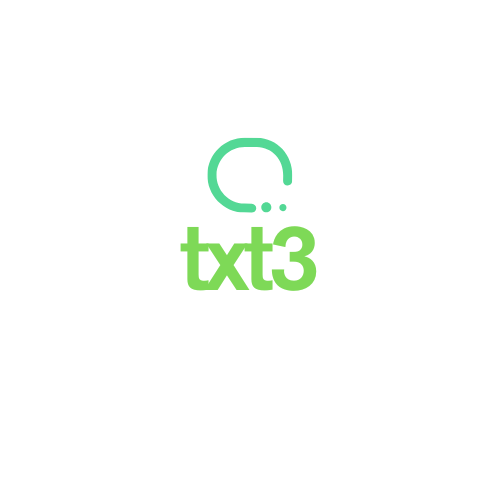Access to quality education can change lives — especially for immigrants and refugees looking to rebuild their future in a new country. The United States offers a wide range of free certified courses, many of which are accessible online and designed to empower people regardless of their background.
For those who face language barriers, financial challenges, or unfamiliarity with the U.S. education system, these courses provide an opportunity to gain valuable skills, improve employability, and build confidence. From English classes to technology training, many programs include certification that can be added to a resume or job application.
If you’re an immigrant or refugee living in the U.S. and want to learn how to take advantage of these opportunities, this guide is for you. Keep reading to discover how to find, enroll in, and benefit from certified courses that are completely free — no experience required.
Step 1: Understand What Free Certified Courses Are
Free certified courses are educational programs provided at no cost, usually by public institutions, non-profits, universities, or online platforms. These courses come with a certificate of completion or achievement, which serves as proof of your newly acquired skills.
There are two common types:
- Online courses: Offered by platforms like Coursera, edX, or local libraries. Flexible and accessible from anywhere.
- In-person or hybrid courses: Usually provided by community colleges, resettlement agencies, or local adult education centers.
The certificate might not replace a university degree, but it can significantly enhance your resume and show employers or institutions that you’re actively learning.
Step 2: Identify What Skills You Need or Want to Learn
Before searching for a course, it’s important to ask yourself:
What do I want to achieve?
Some examples of common goals for immigrants and refugees include:
- Learning English as a Second Language (ESL)
- Gaining job-specific skills (like Microsoft Excel, basic coding, childcare, or construction)
- Completing a GED (General Educational Development) program
- Exploring new fields such as digital marketing, healthcare, or customer service
Write down your goals and interests. This will help you find the right course that matches your path and schedule.
Step 3: Use Trusted Platforms to Search for Free Courses
There are several reliable websites and organizations that offer access to free certified courses. Here are some you can start with:
- Coursera (www.coursera.org) – Offers many free courses with financial aid for certificates, often from top universities.
- edX (www.edx.org) – Similar to Coursera, with options from Harvard, MIT, and more.
- USAHello (www.usahello.org) – A nonprofit that provides free courses and resources specifically for immigrants and refugees.
- CareerOneStop (www.careeronestop.org) – Sponsored by the U.S. Department of Labor. Provides training resources by state.
- Local libraries and community colleges – Often offer in-person or online classes and access to learning platforms like LinkedIn Learning or Northstar Digital Literacy.
When searching, use keywords like “free course with certificate,” “immigrant training program,” or “refugee education USA.”
Step 4: Apply for Financial Aid or Full Waivers (When Needed)
Some courses offer content for free but charge for the certificate. However, many platforms provide full financial aid if you explain your situation.
For example:
- Coursera: Offers a “Financial Aid” application on most courses. Simply click “Financial aid available,” answer a few questions, and wait for approval (usually within 15 days).
- edX: Offers a 90% discount on verified certificates for eligible students.
- LinkedIn Learning (via library card): 100% free if your local library offers access. The certificate can be added to your LinkedIn profile or resume.
Always read the course details carefully and look for “audit,” “free,” or “apply for financial aid” options before enrolling.
Step 5: Enroll and Set a Study Routine
Once you find a course that fits your goals, enroll and set up a study plan that works for your schedule.
Here are some tips to stay on track:
- Block time weekly – Set specific hours each week to study, even if it’s just 30 minutes a day.
- Take notes – Write down key ideas to help with understanding and memory.
- Use subtitles or transcripts – If you’re still learning English, these features help a lot.
- Join forums – Many courses have discussion boards where you can ask questions and meet other learners.
- Set reminders – Use your phone or calendar to stay on track with deadlines.
Remember: you don’t need to be perfect to make progress. Stay consistent and celebrate small wins.
Step 6: Complete the Course and Download Your Certificate
At the end of the course, you’ll typically have to:
- Pass quizzes or assignments
- Watch a required number of videos or modules
- Submit a final test or project
Once completed, you’ll receive a certificate, often in PDF format, which you can:
- Print and keep in a portfolio
- Upload to job applications
- Share on LinkedIn or your resume
Make sure your name is correct on the certificate and save it in both digital and printed formats.
Step 7: Use the Certificate to Apply for Jobs or Education
Your certificate is more than just a document — it’s a door-opener.
Here’s how to use it:
- Add it under the “Certifications” or “Education” section of your resume
- Mention it in your cover letter when applying for jobs
- Show it during job interviews to highlight your initiative
- Include it in applications for further education, such as community college programs or GED preparation
Employers value candidates who show self-motivation, learning attitude, and adaptability — all of which your certificate demonstrates.
Top Free Course Categories for Immigrants and Refugees
If you’re not sure where to start, here are popular course topics that are especially useful:
- English as a Second Language (ESL)
Helps improve communication, access to jobs, and daily life tasks. - Computer Basics
Includes digital literacy, Microsoft Office, and email — essential for most jobs today. - Healthcare Basics
Prepares for entry-level positions such as caregiver or medical assistant. - Customer Service & Sales
Great for jobs in retail, hospitality, or service industries. - Construction & Skilled Trades
Learn basic safety, tools, and terminology for hands-on jobs. - Childcare Training
Important for parents or those looking to work in schools or homes.
Programs and Organizations That Support Immigrants with Free Courses
Here are some specific programs created with immigrants and refugees in mind:
- Refugee Career Pathways (US Government Program)
Offers job training and certifications in several states. - Upwardly Global (www.upwardlyglobal.org)
Helps immigrants and refugees with professional backgrounds find skilled jobs. - HIAS (www.hias.org)
Supports refugee resettlement with access to education and vocational training. - International Rescue Committee (www.rescue.org)
Offers workforce development, English classes, and job readiness support. - Catholic Charities
Many branches offer adult education programs for newcomers.
Always check eligibility on the official website. Some require proof of immigration status or residence in specific areas.
Common Challenges (and How to Overcome Them)
Taking a course in a new country, especially in another language, comes with challenges. But here’s how to face them:
- Language barrier: Use subtitles, translation tools, or look for bilingual resources.
- Time constraints: Choose self-paced courses and study a little each day.
- Lack of equipment: Use public libraries or community centers with free internet/computers.
- Fear of failure: Remember that learning is a process. Don’t aim for perfection — just progress.
Every step you take, no matter how small, builds your confidence and skill set.
Final Thoughts
Education opens doors. For immigrants and refugees in the United States, free certified courses offer more than just new skills — they offer hope, progress, and empowerment.
Even if you’re starting from scratch, there are programs tailored to your needs and goals. All it takes is one step: choosing to learn. You don’t need to know everything. You just need to begin.
Explore your options, follow the steps in this guide, and invest in your future — one course at a time.
Frequently Asked Questions (FAQs)
1. Do I need a Social Security Number to take free certified courses in the U.S.?
Not always. Many online platforms like Coursera or edX don’t require it. Some in-person programs might, but alternatives are usually available.
2. Can undocumented immigrants take free courses with certificates?
Yes. Many nonprofits and online platforms don’t require legal status for enrollment. Look for programs that are open to all regardless of immigration status.
3. Are the certificates from free courses recognized by employers?
Certificates from platforms like Coursera, edX, or community colleges are widely respected, especially when related to practical skills.
4. How long do free courses usually take to complete?
It varies. Some take 2–4 weeks, others several months. Many are self-paced, so you can study based on your own schedule.
5. Can I use these certificates to apply for university or college later?
While not equivalent to a degree, these certificates show initiative and skills, which can strengthen your college or scholarship applications.



